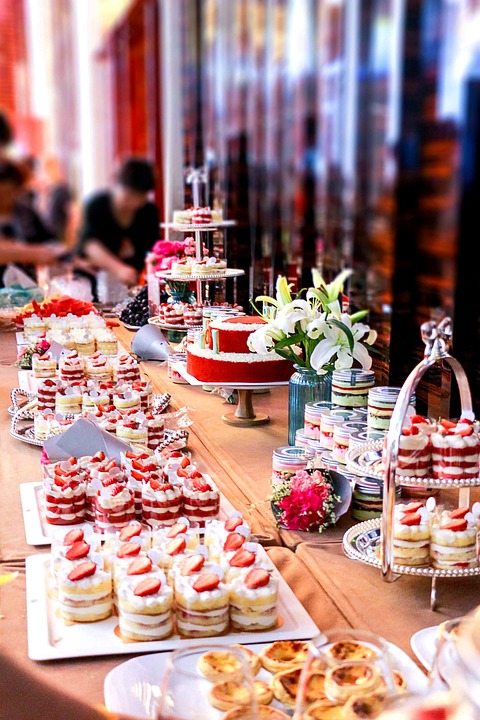The Art of Plating: Elevate Your Desserts with Stunning Presentation

[ad_1]
The Art of Plating: Elevate Your Desserts with Stunning Presentation
Desserts are often the grand finale of any meal, a sweet note that lingers on the palate and in the memory. While taste is paramount, the visual presentation of a dessert can elevate the experience to an entirely new level. The art of plating is a skill that blends creativity, technique, and an understanding of aesthetics. In this article, we explore the essentials of dessert plating, offering tips and inspiration to help you create stunning desserts that are as beautiful as they are delicious.
Understanding the Basics of Plating
Before diving into the intricacies of dessert plating, it’s important to grasp some foundational principles. The goal of plating is to create a visual story that complements the flavors of the dish. Here are a few basic concepts to keep in mind:
– **Balance:** Achieving a harmonious balance between colors, shapes, and textures is crucial. A well-plated dessert should not feel overcrowded or chaotic; instead, it should guide the eye naturally across the plate.
– **Contrast:** Utilizing contrasting colors and textures can add depth and intrigue to your presentation. For example, pairing a smooth chocolate mousse with a crunchy caramel tuile creates a delightful juxtaposition.
– **Focal Point:** Every plated dessert should have a focal point that draws attention. This could be the main element of your dessert, such as a beautifully crafted tart or an exquisitely shaped panna cotta.
Choosing the Right Plate
The choice of plate can significantly impact the overall presentation of your dessert. Opt for plates that suit the style and color of your dish. White plates are classic and versatile, allowing vibrant colors to pop, while dark plates can create a dramatic backdrop for lighter desserts. Additionally, consider the size and shape of the plate—larger plates can provide more space for artistic designs, while smaller plates can create an intimate setting.
Incorporating Colors and Textures
The visual appeal of a dessert is greatly enhanced by the use of color and texture. When plating, think about the various components of your dessert:
– **Colors:** Use fresh fruits, edible flowers, or sauces to add splashes of color. A bright raspberry coulis drizzled around a lemon tart can create a stunning visual contrast.
– **Textures:** Incorporate a variety of textures to engage the senses. A silky mousse topped with crunchy nuts, or a creamy panna cotta paired with a crispy cookie, creates an enjoyable contrast.
Garnishing Techniques
Garnishes can elevate a dessert from ordinary to extraordinary. Here are some techniques to consider:
– **Sauces:** Drizzle sauces artistically on the plate. Use squeeze bottles or spoons to create precise lines or dots. A rich chocolate sauce or a tangy fruit coulis can enhance both flavor and presentation.
– **Edible Flowers:** Fresh edible flowers add a touch of elegance and color to your dessert. They can be placed whole or strategically torn to create an organic look.
– **Herbs and Spices:** Fresh mint leaves, basil, or a sprinkle of cinnamon can provide an aromatic element to your dessert, enhancing the overall sensory experience.
Playing with Height and Layers
Creating height in your dessert presentation can add visual interest and sophistication. Layering components—such as a stack of macaroons or a towering slice of cake—can create a focal point and draw the eye upward. Use support structures like cake rings or molds to achieve clean, structured layers.
Practice and Experimentation
Like any art form, mastering the art of plating takes practice. Don’t be afraid to experiment with different techniques, styles, and flavors. Try out various plating styles, from minimalist designs to extravagant displays. Take inspiration from professional pastry chefs, food blogs, and social media, but remember to infuse your unique personality into your presentations.
The Final Touch: Serving
Once you’ve plated your dessert, consider the final touches that can enhance the experience. Serve with complementary elements, such as a scoop of ice cream, a dollop of whipped cream, or a side of fruit. The way you serve the dessert can also contribute to its overall presentation—consider using elegant utensils or decorative serving dishes.
Conclusion
The art of plating is an exciting way to express creativity and enhance the dining experience. By focusing on balance, contrast, and aesthetics, you can transform simple desserts into visual masterpieces. Remember, the key to stunning presentation lies in practice and experimentation. So, gather your ingredients, unleash your creativity, and let your desserts shine on the plate!
[ad_2]



